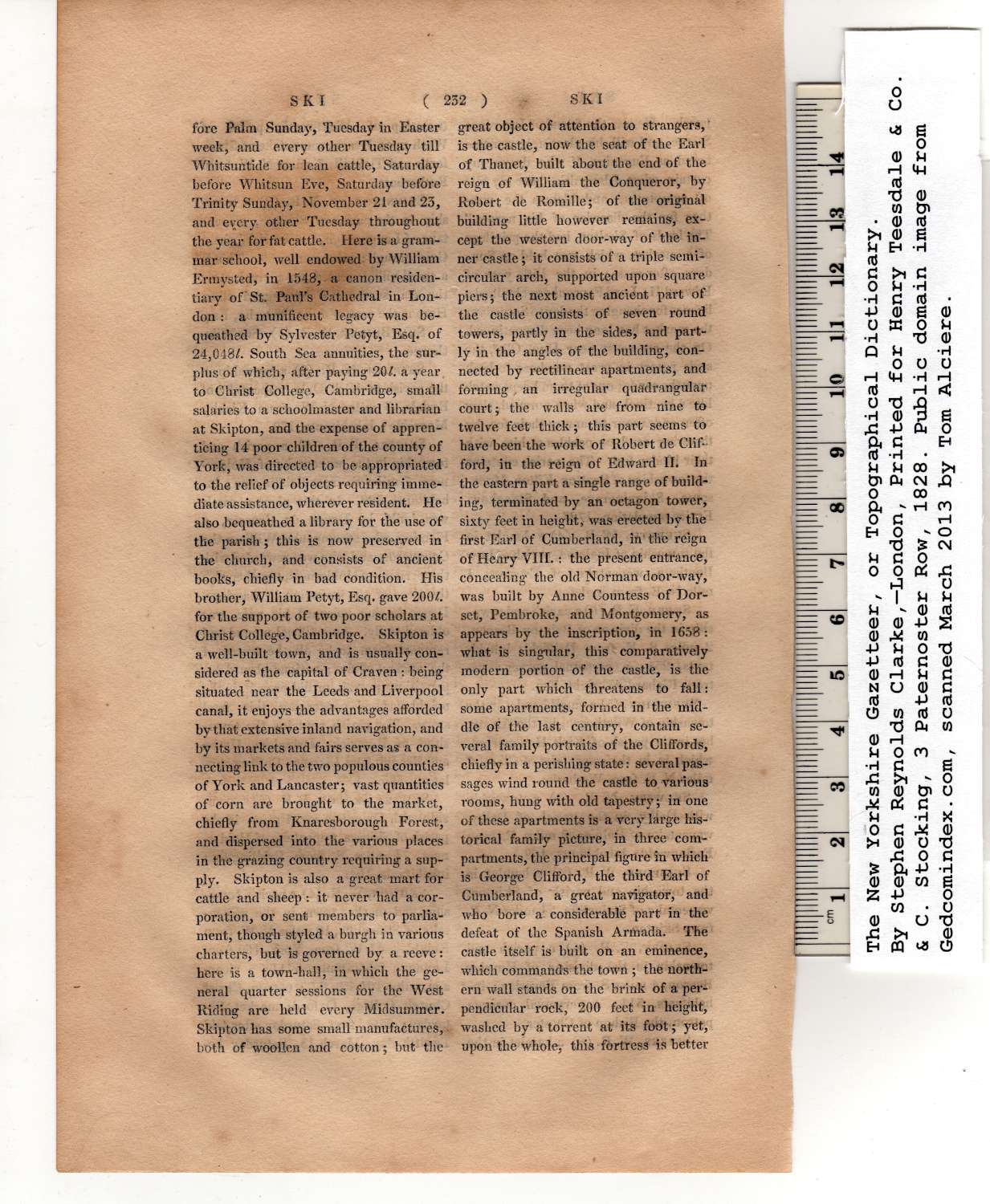|
fore Palm Sunday, Tuesday in Easter
week, and every other Tuesday till
Whitsuntide for lean cattle, Saturday
before Whitsun Eve, Saturday before
Trinity Sunday, November 21 and 23,
and every other Tuesday throughout
the year for fat cattle. Here is a gram-
mar school, well endowed by William
Erinysted, in 1548, a canon residen-
tiary of St. Paul’s Cathedral in Lon-
don : a munificent legacy was be- |
queathed by Sylvester Petyt, Esq. of
24,048/. South Sea annuities, the sur-
plus of which, after paying 20/. a year
to Christ College, Cambridge, small
salaries to a schoolmaster and librarian
at Skipton, and the expense of appren-
ticing 14 poor children of the county of
York, was directed to be appropriated
to the relief of objects requiring imme-
diate assistance, wherever resident. He
also bequeathed a library for the use of
the parish; this is now preserved in
the church, and consists of ancient
books, chiefly in bad condition. His
brother, William Petyt, Esq. gave 200/.
for the support of two poor scholars at
Christ College, Cambridge. Skipton is
a well-built town, and is usually con-
sidered as the capital of Craven : being
situated near the Leeds and Liverpool
canal, it enjoys the advantages afforded
by that extensive inland navigation, and
by its markets and fairs serves as a con-
necting link to the two populous counties
of York and Lancaster; vast quantities
of corn are brought to the market,
chiefly from Knaresborough Forest,
and dispersed into the various places
in the grazing country requiring a sup-
ply. Skipton is also a great mart for
cattle and sheep: it never had a cor-
poration, or sent members to parlia-
ment, though styled a burgh in various
charters, but is governed by a reeve:
here is a town-hall, in which the ge-
neral quarter sessions for the West
Riding are held every Midsummer.
Skipton has some small manufactures,
both of woollen and cotton; but the
great object of attention to strangers,
is the castle, now the seat of the Earl
of Thanet, built about the end of the
reign of William the Conqueror, by
Robert de Romiile; of the original
building little however remains, ex-
cept the western door-way of the in-
ner castle; it consists of a triple semi-
circular arch, supported upon square
piers; the next most ancient part of
the castle consists of seven round
towers, partly in the sides, and part-
ly in the angles of the building, con-
nected by rectilinear apartments, and
forming , an irregular quadrangular
court; the walls are from nine to
twelve feet thick; this part seems to
have been the work of Robert de Clif-
ford, in the reign of Edward II. In
the eastern part a single range of build-
ing, terminated by an octagon tower,
sixty feet in height, was erected by the
first Earl of Cumberland, in the reign
of Henry VIII.: the present entrance,
concealing the old Norman door-way,
was built by Anne Countess of Dor-
set, Pembroke, and Montgomery, as
appears by the inscription, in 1658:
what is singular, this comparatively
modern portion of the castle, is the
only part which threatens to fall:
some apartments, formed in the mid-
dle of the last century, contain se-
veral family portraits of the Cliffords,
chiefly in a perishing state: several pas-
sages wind round the castle to various
rooms, hung with old tapestry; in one
of these apartments is a very large his-
torical family picture, in three com-
partments, the principal fignre in which
is George Clifford, the third Earl of
Cumberland, a great navigator, and
who bore a considerable part in the
defeat of the Spanish Armada. The
castle itself is built on an eminence,
which commands the town; the north-
ern wall stands on the brink of a per-
pendicular rock, 200 feet in height,
washed by a torrent at its foot; yet,
upon the whole, this fortress is better |
